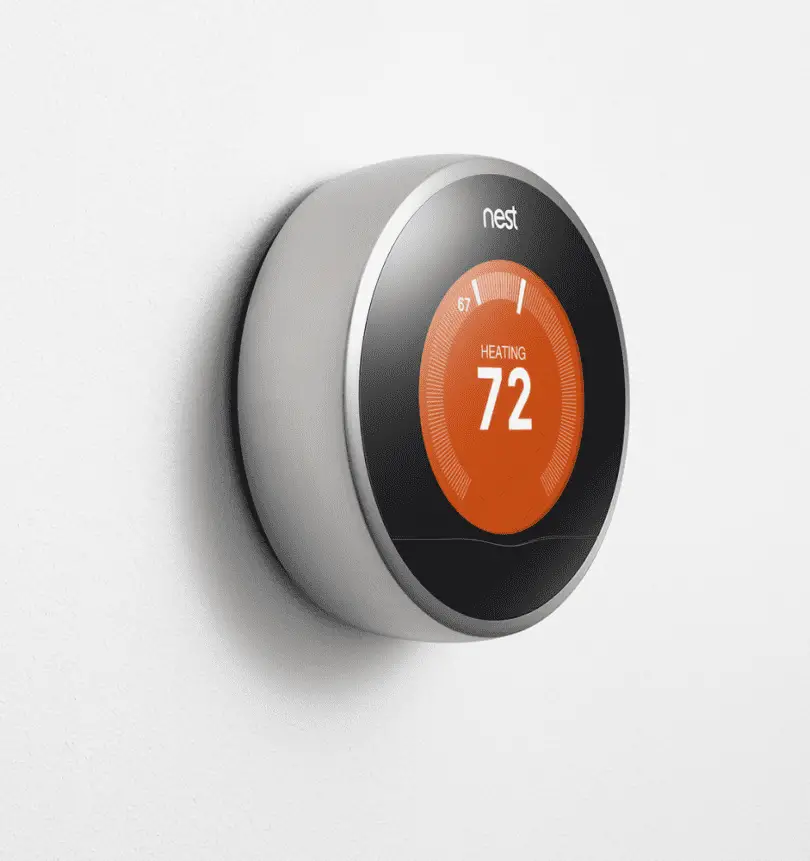The Nest Thermostat represents a groundbreaking innovation that revolutionizes our living experience, offering a blend of comfort and style through features such as remote comfort control and an energy-saving board. For those wondering about the charging duration required to keep the Nest running efficiently, we provide a detailed answer below.
Charging your Thermostat typically takes less than 30 minutes. However, in the case of a completely depleted battery, the recharge process may extend up to two hours. It’s important to note that if the battery level falls below 3.6V, the Wi-Fi connection is lost. While the thermostat generally charges itself when powered on, turning it off for extended periods, when leaving the house, can deplete the battery, necessitating USB charging.
Google’s smart indoor intelligence encompasses various aspects that can significantly impact your home. Below, we delve into all aspects of this smart thermostat, covering its advancements and advantages.
How to Charge Your Nest Thermostat with a USB
1. Turn off the power.
2. Detach the thermostat from the wall.
3. Utilize a standard phone charger to connect to a USB port or a compatible adapter.
4. Check for a blinking light to confirm the charging process, with the pattern indicating the battery’s status.
USB Ports Compatible
– The Nest Thermostat E and the second and third-generation Nest Learning Thermostats feature a Micro-USB port.
– The first-generation thermostat is only compatible with a mini-USB port. If lacking a USB port, replace the AAA batteries on the base.
The Nest smart thermostat incorporates a battery backup to ensure continued operation during power outages. However, this backup is not guaranteed to last indefinitely, and prolonged outages may result in a gradual loss of power and “intelligence” due to the reliance on internet access.
Energy-Saving Mechanism
As the Nest Thermostat becomes familiar with your temperature preferences and patterns over time, it adapts and suggests settings you frequently use, programming itself based on your habits. This self-programming capability extends to turning off when you leave the house and adjusting to external weather conditions for optimal comfort. The thermostat also recommends energy-efficient temperatures, displaying a Nest Leaf on the screen to indicate savings. Additionally, it provides realistic savings estimates based on regional usage data.
Understanding the Thermostat’s C-Wire
The C-wire, or common wire, is crucial for smart thermostats like Nest to maintain a constant supply of 24VAC power required for continuous operation. The Thermostat E specifically needs a C-wire to detect power issues and prevent battery depletion.
Benefits of the Nest Thermostat
– Comfort Through Smart Adjustments: The Nest Thermostat adapts to your preferences, ensuring a comfortable temperature without constant manual adjustments.
– Remote Control: Users can adjust the indoor environment remotely via their smartphones, offering convenience for managing home temperatures even when away.
Potential Risks of the Nest Smart Thermostat
– High Cost: With a price tag of $250, the Nest Thermostat may seem expensive compared to other smart thermostats on the market.
– Security Concerns: Some users have expressed concerns about potential hacking and privacy issues, highlighting the need for vigilance and security measures.
In conclusion, while the Thermostat enhances comfort and energy efficiency, users should be mindful of charging practices and potential security risks. Prioritizing safety and environmental considerations ensures the optimal integration of smart devices into our homes.
Disclosure: We may get commissions for purchases made through links in this post.








